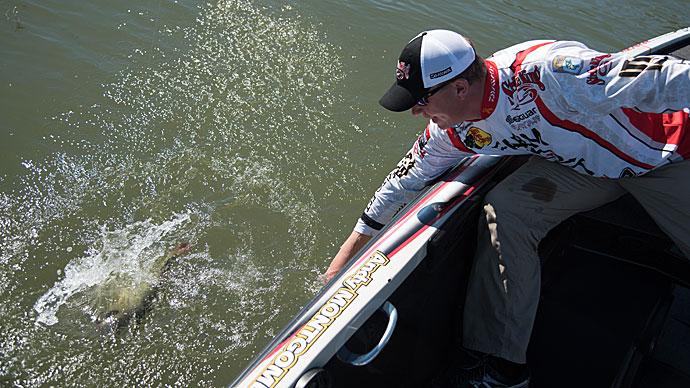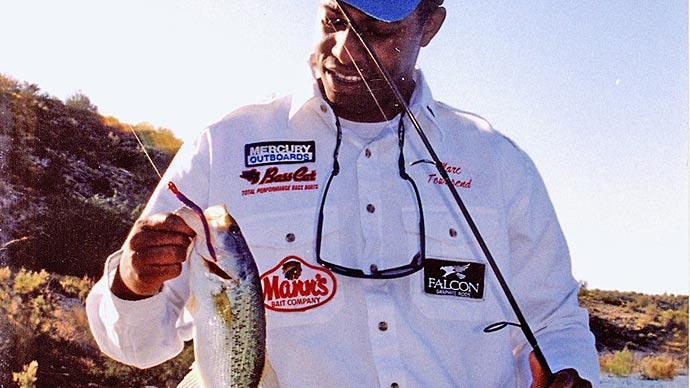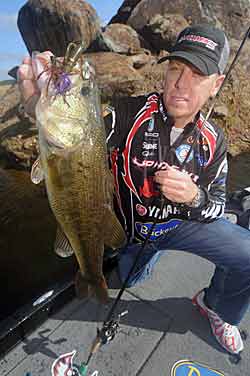
Covering water and locating fish can be one of the most complex and essential factors in bass fishing. This issue is terribly broad and may be mentioned at length. There are many factors that I look at, including the time of year; the weather, fishing the water quickly but effectively, and fishing points, cover, and structure. I’ll attempt here to list a number of the items that I think about when selecting a bait and vicinity to fish.
Undoubtedly, most people jump straight into the many different lures and colors, trying to see what the bass are biting on. My first thought is always, “What time of year is it.” What I mean by this is where I think the bass should be. If it’s around winter or early spring, then I know the bass should be deep and lazy. Also, during these periods, the bass will usually school, and if you can locate these schools, you should be able to catch many of the fish. Usually, ledges and drop-offs are where you want to be fishing. Most of the time, using spinnerbaits, crankbaits, or top water at a slow speed gets them to bite. If not, then using a jig or plastic worm at a slower speed should do the trick. If it’s still pre-spawn, spinnerbaits and crankbaits at a faster speed do the trick. Fish also usually move a little shallower at this time to feed in the cover, so fishing shallower water will get fish. At this time, the bass will be on a feeding frenzy, as they will need to feed a lot to get them through the spawning period.
The bass should be nearby as long as you know where the bait fish are. When the spawn stage begins, try pitching jigs or soft plastics into the centers of bass beds, as the bass will be concentrating on building and protecting the eggs in their beds. Even though the bass will not feed during this time, they will strike at any potential threat in or around their beds. During hot conditions and summer month’s top waters, buzzbaits and crankbaits can be used to locate fish. You can switch to Carolina-rigged lizards or Texas-rigged worms when they have been located. Towards late summer, the bass will also move to deeper water, and the fish will most likely become suspended. At this time, spinnerbaits should be able to get the job done.
Unquestionably, the next deciding factor for me is the weather. When windy, I use crankbaits or spinnerbaits and work in different areas quickly. Usually, baitfish will be on the windy side of banks, so locating the baitfish is essential. Also, casting into the wind can determine the number of fish caught because the fish are usually feeding into the wind. On the other hand, if the sky is overcast, topwaters such as poppers or prop baits usually get the job done. During these conditions, bass will feed all day to cover as much water as possible and keep moving quickly. Jerkbaits are very underrated in today’s market, but they can be used to locate fish that are lethargic as well as aggressive bass. Jerkbaits are also prime baits during spring months. They can be worked very fast, and often if you miss a hit, as long as you stop the bait, you will get hit again. If not, continue your retrieve periodically, stopping to let the bait sink down to the bottom. Once on the bottom, jerking and twitching the bait up and down will usually get them to bite.
Covering the water fast is very important, but you need to cover it effectively. You can do this by using the trolling motor to move your boat about fifteen feet and then drifting while making various fan casts to the area you are fishing. Also, casting in different angles usually triggers the bass to hit, even if your last cast was in the same general area. This is especially important during the winter when the fish are lethargic and want the bait to be put right in front of their face. Also, finding patterns is essential; if the bass are generally hitting tree lay downs or stumps, move your trolling motor faster until you see these structures, rather than fishing regular banks with no structure or cover. When you see these structures, make sure to drift slowly to fish the cover effectively rather than blow by it faster.
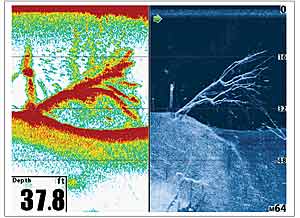
Also, try looking for areas with rocks, wood, or weeds. They provide cover for the bass, which they use to ambush prey, hide, or just have shade when the sun is out. Docks, brush lay downs, hydrilla, lily pads, and rock structures are excellent examples of structure and cover and should catch your eye. Most of the strikes in these areas will be aggressive, and the strikes will happen before the bait hits the bottom most of the time. You can also use depthfinders to find structure and ledges to fish. Recently in the electronics market, new sonar technology, such as the Humminbird sonar/gps combos, started from 300 to 1100. It lets you get a 360-degree look at the bottom and what you are trying to fish, from drops, structures, or underwater cover, such as logs, rocks, or dead trees.
Covering water and locating fish can be very stressful and discourage many young and inexperienced anglers, as well as avid anglers and professionals alike. Still, with the proper know-how and technique, it is not impossible to find them. Following these tips will produce results and raise your fishing skills to the next level. Hopefully, these tips and techniques will get you some nice results at your next tournament weigh-in or some nice bass for your lunker picture frame at home. Finally, always remember to have fun and keep bassing. Catch YA’LL on the water.
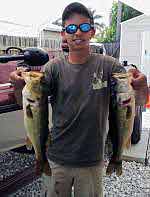
Growing up in South Florida to a family chock-full of outdoorsmen, I was raised with a rod in one hand and a rifle in the other. My goal as an outdoorsman is to catch not only quality and trophy wildlife, but also their conservation and habitats. With conservation come many more years of happiness, joy, and opportunities for other generations, just as I had. The outdoors is my life, passion, and obsession. Hope to see Y’all outdoors!



